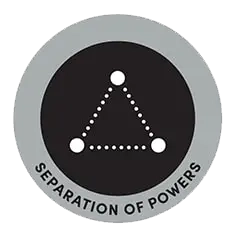The Separation of Powers in the Constitution divides the institutions of government into three groups.
These are the Legislature, the Executive and the Judiciary. The legislature is better known as the Parliament, which debates and makes laws. The Executive Government, which we usually refer to as ‘the government’, recommends new laws and puts them to the Parliament. The Judiciary applies and interprets the law.

French philosopher Montesquieu
French philosopher Montesquieu said the King’s power must be limited
Every person with power is apt to abuse it. To prevent this, power should be a check to power. When the legislative and executive powers are the same person there can be no liberty. The monarch might enact tyrannical laws and execute them in a tyrannical manner.
(paraphrased)
What is the Separation of Powers?
Checks and balances on the people in our institutions of government mean none of them have too much power. The first three chapters of our give legislative power to Parliament, executive power to the Government and judicial power to the courts.
What are the rules for each branch of government?
The Parliament debates and makes laws that everyone in Australia must follow. The Executive Government implements laws once passed. Courts apply and interpret the law.
How do the three branches of government restrain each other?
If the Government recommends a law unacceptable to Parliament, Parliament can refuse to pass it. If an unconstitutional law is made by the Parliament the Court can invalidate it. The Court can only rule on matters allowed by law or the Constitution.
The separation of powers protects us
Sometimes the Government is frustrated when Parliament does not pass legislation. And occasionally people complain about the Court striking down unconstitutional laws. But the system was deliberately designed this way to protect us from an abuse of power.


